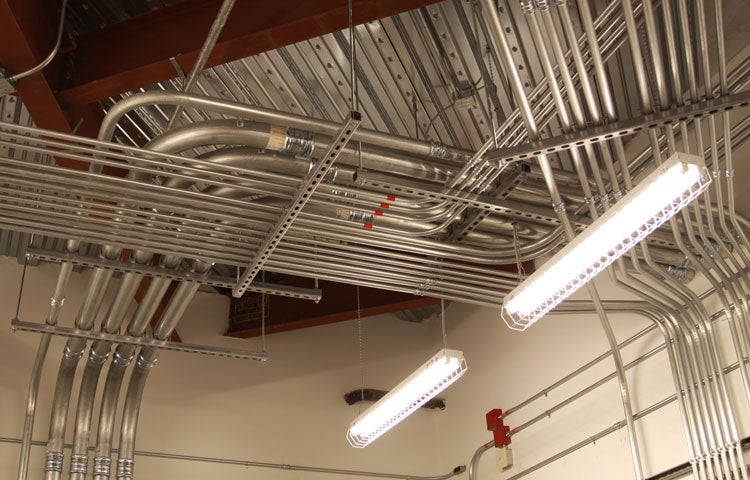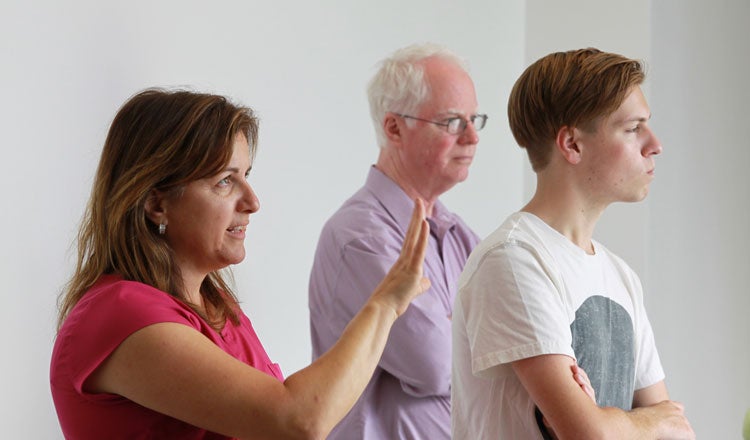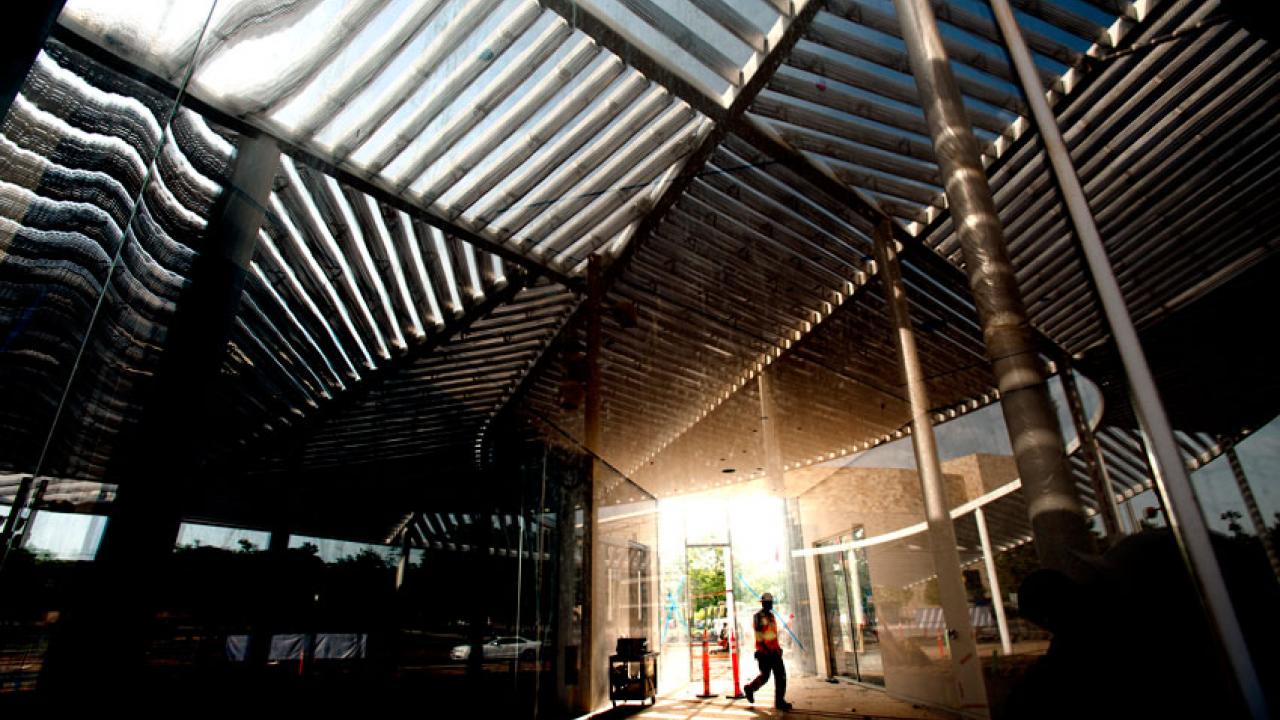With the construction fence down, drought-tolerant landscaping in place and long white curtains now covering the floor-to-ceiling windows in the exhibit space, the Jan Shrem and Maria Manetti Shrem Museum of Art “feels pretty well finished,” says Julie Nola, talking about the structural side of the project.
“Ironically, I’ve never really been interested in fine art, but this building itself has been a work of art for me,” said Nola, who works for UC Davis Design and Construction Management and has been project manager for the museum since long before construction began in 2015.
The Manetti Shrem Museum is “a once-in-a-career opportunity.” — Clayton Halliday, campus architect and associate vice chancellor, Design and Construction Management
Building this “work of art” required a perfectly choreographed collaboration of many different partners — following the same model that Design and Construction Management uses with great success all around the campus. “Each building project on campus is a team effort, and after working together for two to three years on a single project, you begin to feel like a family,” Nola said. “By the end of the project, you’ve been through so much together — traveling together, collaborating in meetings and workshops, making decisions together.”
Design competition
The museum project started with a design competition, something UC Davis is using more frequently as a way to solicit multiple ideas.
The museum project came down to three finalists. “Each of them presented beautiful designs, but one really stood out for us,” Nola said. “Two designs were very similar with a stepped design featuring sweeping staircases. But the one we chose felt unique to Davis. It really connected to our campus and community.”
In May 2013, the campus chose its design-build team: SO — IL, an emerging, New York-based design firm; Bohlin Cywinski Jackson, a prominent architectural firm with offices in San Francisco, Seattle and Pennsylvania; and the national Whiting-Turner Contracting Co.
After one year in design and two years in construction, the Manetti Shrem Museum is scheduled to open to the public on Nov. 13.
The job of a project manager
Nola explained that the Number 1 thing about being a project manager is being able to make decisions — a lot of decisions — to keep construction moving. “There are so many details to be worked out, you have no idea,” she said, citing examples that ranged from security camera functionality, to where to place pillars to maximize outdoor event space, to determining the type and placement of the humidifiers.

“You have to make decisions on things you aren’t an expert at, so you ask the right questions — what’s it going to cost, how will it impact the schedule, will it benefit the project — and you trust your team,” Nola said. “You can’t have a depth of knowledge for everything, but you pick up things.”
The project team — comprising the museum director, design firm, engineering firm, construction firm, project manager and other stakeholders — worked together for more than a year to finalize the design of the building.
The museum director is thinking from a programmatic perspective, about exhibits, events and opportunities for community engagement. The designers are thinking from a design perspective, about angles, natural light and other architectural elements. The engineers are thinking about how to keep the building structurally sound. And the contractor is thinking about costs and schedule.
Nola, who has been with UC Davis since 1993, has managed dozens of projects, including the Hutchison Child Development Center, the Jackson Sustainable Winery and several veterinary medicine facilities.
“I love my job. Each project brings a new unique set of challenges, from an equine research treadmill facility to a sustainable brewery and winery. I’m intrigued by each new project,” said Nola, who comes from a family rooted in agriculture and winemaking.
“The diversity of buildings here on this small plot of land creates opportunities to learn how a building can serve the program it’s intended for. It opens my mind to a different discipline, and I get to work with extremely educated and talented people,” she said.

Drawing on the experience of others
During the design process for the Manetti Shrem Museum, the project team visited several museums across the country to discuss challenges and considerations.
In Toledo, Ohio, the team saw the impact of natural light in a glass-walled museum — especially important given that the Manetti Shrem Museum itself has 14-foot-tall glass walls. (Curtains can be opened and closed as needed to help manage the interior temperature and to prevent sunlight from shining directly on artwork.)
“It’s tricky to do natural light with an art collection,” Nola said. “Natural light can degrade the art and interfere with the guest experience. We spent a lot of time on sun patterns, lighting studies, the kinds of light our museum receives, and where we would display the art.”
All this will be key when the Manetti Shrem Museum seeks to borrow art from other institutions, and the lenders want to ensure their works will not be subject to unsafe environmental conditions. Testing is still in progress to collect the data for this certification.
The university is striving for LEED certification, too — Leadership in Energy and Environmental Design — at the highest level: platinum. “We wanted to achieve a high level of sustainability, which is something we do with all of our projects,” Nola said. “We do this while trying to meet the needs of the program inside the walls, whether it’s art, winemaking, surgeries or research.”
“We wanted a building that is art itself and still serves its function, and that’s exactly what we got.”
Media Resources
BreAnda Northcutt, 530-752-7112, bnorthcutt@ucdavis.edu
